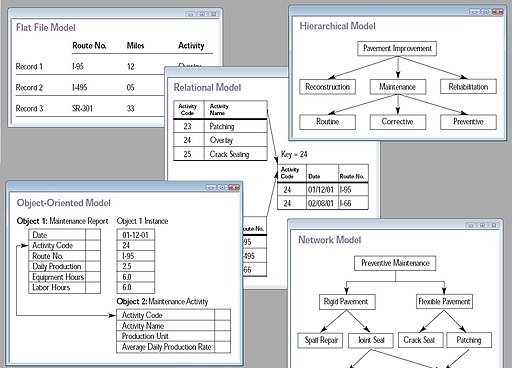In most companies, business growth leads to greater organizational complexity. With more clients to juggle, owners must increasingly delegate less important tasks to a growing pool of employees and lower management. With time, the org charts grow from simple diagrams to poster-sized trees. Departments and SBUs become separate entities. What was once a three-man startup morphs into the enterprise behemoth we all know and love.
For Vandelay Books, however, this was not the case. Despite becoming one of the largest book distributors in the state, the owners—a husband and wife pair of successful enterpreneurs—kept a firm grip on every single aspect of business. While it helped to alleviate many of the problems found in large enterprises, it also meant several departments were severely understaffed and barely managed. The internal software department, in particular, consisted of a single developer and an occasional intern or contractor ever since the company had started operating.
While it looked like a recipe for disaster, Vandelay Books had two redeeming features: they were hiring, and paying handsomely. For desperate George, who'd nearly exhausted his unemployment emergency fund, all it took was to shake hands with the couple and sign the contract. From there, it was on to a brighter future, assisting with the migration of the company's software suite from an ancient and unsupported database to something more modern.
After setting up his desk and workstation, the owners led George to a grey-haired, scruffy man sitting at the other end of the room.
"This is Doug, our lead developer," the husband introduced.
"Pleasure to meet you." Doug stood and shook George's hand, smiling from ear to ear. "Have you settled in already?"
"I think so, yes," George said. "All I need is a copy of the database to work with."
"I'll get it for you as soon as possible." Doug turned towards his PC and started typing.
After exchanging a few more words with the owners, George left for his desk, expecting the database copy to be waiting in his inbox.
An hour later, George had grown impatient. What's taking him so long? he wondered. It shouldn't take more than a few minutes to run a build script.
He decided to remind Doug about the copy. Doug was at his desk, furiously whacking at the keyboard and grinning to himself.
"Hi, how's that database coming along?" George asked, trying to hide his irritation.
"Almost done!" Doug took his hands off the keyboard, his lips still curved in a beaming smile. "Sorry to keep you waiting, there's a lot of tables in here."
"What do you mean, lots of ...?" George began, but a quick glance over Doug's shoulder answered his question. Instead of a shell window or a database IDE, Doug's display consisted of nothing but a large Notepad window, with the cursor placed in the middle of an unfinished CREATE TABLE statement.
No wonder it takes so long when you're typing the entire database out! George barely held back from screaming at his coworker. Instead, he stepped away as casually as possible and opened his IDE, morbidly anticipating the horrors lurking in the codebase.
A quick skim through the code made George realize why Doug was always smiling. It was the blissful smile of complete and utter ignorance, the smile of someone who'd risen far beyond their level of incompetence and was now eternally grateful for every day things didn't fall apart.
And the code looked like it could fall apart any minute. Over 300,000 lines had been thrown together without rhyme or reason. Obviously, Doug hadn't heard of such modern concepts as "layers" or "structured code," instead opting to hack things together as he went along. Windows API calls, business code, inline strings and pieces of SQL—everything was shoved together wherever it would stick, creating the programming equivalent of a Katamari.
George sat there, pondering all the wrong decisions in his life that'd led to this Big Ball of Mud, until Doug appeared beside him and shook him out of his stupor.
"Oh, I see you're already looking at the code!" Doug said. "It's not that hard to understand, really. I even have a few flowcharts that could help you out! Anyway, you just need to go through each of these commands, one by one—remember, it's not really SQL—like here, when it says SELECT with no FROM like this? It's actually a DELETE. And so on. Simple, isn't it?"
His head spinning, George decided to risk it. "Actually, I was thinking we could structure it a little. Separate those calls out, make a few functions that read or insert records—"
"I beg your pardon?" Doug's smile faded, giving way to the surprised look of a deer in headlights.
"I mean ... uh, never mind."
Sure, the migration would take a hundred times longer Doug's way—but as long as the paychecks cleared, it wasn't worth it to George to fix the unfixable.
Days passed slowly at Vandelay Books, and George's heroic efforts slowly paid off. The code was still terrible despite numerous attempts to improve it when Doug wasn't looking, and the migration wasn't even close to being completed, but George could finally pay his bills and refill his accounts. Once in a while, the owners would stop by for a friendly chat. Between that and the relaxed atmosphere, George began to enjoy the company, if not the job he was tasked with.
Eventually, during one of the conversations with the owners, George felt confident enough to mention that there was a way to get the migration done faster and more efficiently. He hoped they'd be able to convince Doug to let him have more freedom with refactoring the code, or at least fixing some of the most offensive spots.
Instead, all he got were puzzled looks and a long, uncomfortable silence.
The next day, the husband approached him as soon as he entered the office.
"George." The owner's voice was dry and stern. "We've discussed what you said yesterday with Doug, and we've decided we won't be needing your services anymore. Please clear out your desk by today."
George didn't bother arguing. He quietly packed his things, said his goodbyes, and headed back home to polish his resume again. And although he soon found a job at a much more sanely managed company, he often wondered if Doug were still migrating the application one query at a time—and whether he was still able to smile.


